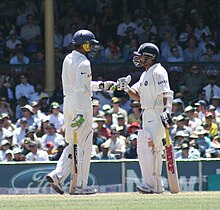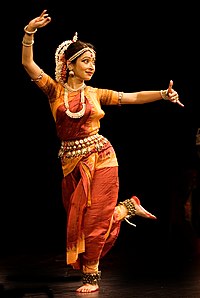1. The Indian History
The history of India begins with evidence of human activity of Homo sapiens as long as 75,000 years ago, or with earlier hominids including Homo erectus from about 500,000 years ago. The Indus Valley Civilization, which spread and flourished in the northwestern part of the Indian subcontinent from c. 3300 to 1300 BCE, was the first major civilization in India. A sophisticated and technologically advanced urban culture developed in the Mature Harappan period, from 2600 to 1900 BCE. This Bronze Agecivilization collapsed before the end of the second millennium BCE and was followed by the Iron Age Vedic Civilization, which extended over much of the Indo-Gangetic plain and which witnessed the rise of major polities known as the Mahajanapadas. In one of these kingdoms, Magadha, Mahavira and Gautama Buddha were born in the 6th or 5th century BCE and propagated their śramanic philosophies.
{Continue Reading}2. Indian Tourism
Tourism in India is the largest service industry, with a contribution of 6.23% to the national GDP and 8.78% of the total employment in India. India witnesses more than 5 million annual foreign tourist arrivals and 562 million domestic tourism visits. The tourism industry in India generated about US$100 billion in 2008 and that is expected to increase to US$275.5 billion by 2018 at a 9.4% annual growth rate. In the year 2009, 5.11 million foreign tourists visited India. Majority of foreign tourists come from USA and UK. Rajasthan (Land of Kings), Tamil Nadu, Maharashtra, Delhi and Uttar Pradesh were the top four states to receive inbound tourists. Domestic tourism in the same year was massive at 650 million. Andhra Pradesh, Uttar Pradesh and Tamil Nadu received the big share of these visitors. Ministry of Tourism is the nodal agency to formulate national policies and programmes for the development and promotion of tourism. In the process, the Ministry consults and collaborates with other stakeholders in the sector including various Central Ministries/agencies, the State Governments/ union Territories and the representatives of the private sector. Concerted efforts are being made to promote new forms of tourism such as rural, cruise, medical and eco-tourism. The Ministry of Tourism is the nodal agency for the development and promotion of tourism in India and maintains the Incredible India campaign.
{Continue Reading}3. The Constitution of India
The "Constitution of India" is a book consisting of the laws and regulations of the country.The Constitution of India (Hindi: भारतीय संविधान, see names in other Indian languages) is the supreme law of India. It lays down the framework defining fundamental political principles,establishes the structure, procedures, powers and duties, government and spells out the fundamental rights, directive principles and duties of citizens. It is the longest written constitution of any sovereign country in the world, containing more than 395 articles in 22 parts, 12 schedules and 110 amendments, for a total of 117,369 words in the English language version. Besides the English version, there is an official Hindi translation.
4. Indian Democracy
India is a constitutional republic consisting of 28 states and seven center-controlled union territories with New Delhi as the nation's capital. It is the seventh largest and second most populous country with roughly one sixth of the world’s population, making it the largest world's democratic country. It is one of the world's oldest civilizations with a rich and varied cultural heritage. It has achieved widespread socio-economic progress during the last 62 years of its independence. From self-sufficiency in agricultural production to space exploration, India is competing effectively with other developed nations.
5. Indian Sports

Sport in India includes cricket, chess, badminton, field hockey, tennis, association football and golf. Field Hockey is the official national sport in India, and the country has an impressive eight Olympic gold medals in field hockey, though cricket is the most popular sport in India. Other popular sports include football, tennis, volleyball, and badminton. After the 1982 Asian Games hosted in New Delhi, the capital city now has modern sports facilities, and similar facilities are also being developed in other parts of the country. Besides sports and games included in the international sporting agenda, there are many which have developed indigenously.
Throughout the country a wide variety of sports are played. India is home to several traditional sports which originated in the country and continue to remain fairly popular. These include kabbadi, kho kho, pehlwani and gilli-danda. The British rule brought many popular sports in India including football, rugby union, cricket, golf, tennis, squash, hockey, boxing, snooker, and billiards.
India has hosted or co-hosted several international sporting events, such as the 1951 Asian Games and the 1982 Asian Games, the 1987 Cricket World Cup and 1996 Cricket World Cup, the 2003 Afro-Asian Games, the 2010 Hockey World Cup, the 2010 Commonwealth Games, and the 2011 Cricket World Cup. Major international sporting events annually held in India include the Chennai Open, Mumbai Marathon, Delhi Half Marathon and the Indian Masters. India is also scheduled to host the first Indian Grand Prix in 2011.
India is also home to cricket's Indian Premier League, launched in 2008, and its fourth season of Indian Premier League has began on the 8th April 2011.
6. India


{Continue Reading}
7. Indian Dances


Dance in India covers a wide range of dance and dance theatre forms, from the ancient classical or temple dance to folk and modern styles.
Three best-known hindu deities, Shiva, Kali and Krishna, are typically represented dancing. There are hundreds of Indian folk dances such as Bhangra, Bihu, Ghumura Dance, Sambalpuri, Chhau andGarba and special dances observed in regional festivals. India offers a number of classical Indian dance forms, each of which can be traced to different parts of the country. The presentation of Indian dance styles in film, Hindi Cinema, has exposed the range of dance in India to a global audience.
8. Indian Languages

The languages of India belong to several language families, the major ones being the Indo-European languages—Indo-Aryan (spoken by 72% of Indians) and the Dravidian languages(spoken by 25% of Indians). Other languages spoken in India belong to the Austro-Asiatic, Tibeto-Burman, and a few minor language families and isolates.
The principal official language of the Republic of India is Standard Hindi, while English is the secondary official language. The constitution of India states that "The official language of the Union shall be Hindi in Devanagari script." Neither the Constitution of India nor Indian law specifies a national language, a position supported by a High Court ruling. However, languages listed in the Eighth Schedule of the Indian constitution are sometimes referred to, without legal standing, as the national languages of India.
Individual mother tongues in India number several hundred;] the 1961 census recognized 1,652 (SIL Ethnologue lists 415). According to Census of India of 2001, 29 languages are spoken by more than a million native speakers, 122 by more than 10,000. Three millennia of language contact has led to significant mutual influence among the four language families in India and South Asia. Two contact languages have played an important role in the history of India: Persian and English.
9. Population of India

The demographics of India are remarkably diverse. India is the second most populous country in the world, with over 1.21 billion people (2011 census), more than a sixth of the world's population. Already containing 17.5% of the world's population, India is projected to be the world's most populous country by 2025, surpassing China, its population exceeding 1.6 billion people by 2050. Its population growth rate is 1.41%, ranking 93rd in the world.
India has more than 50% of its population below the age of 25 and more than 65% hovers below the age of 35. It is expected that, in 2020, the average age of an Indian will be 29 years, compared to 37 for China and 48 for Japan; and, by 2030, India's dependency ratio should be just over 0.4.












